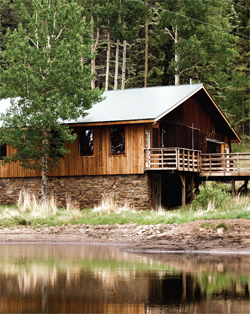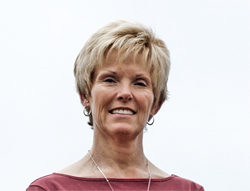| July 2007 |
|
A Boom Unabated
About a year ago, Robb and Debb Holub watched as their son emerged from a medically induced coma, mouthing the words to the favorite song his worried parents had played over and over again in the hospital room at Palomar Medical Center north of San Diego. As Joey Holub was on his way toward a miraculous recovery – he had sustained serious head wounds after being hit by a car, and was weeks away from walking out of the hospital on a path to making a full recovery – his parents began thinking about how they could give something back. The answer came when a friend of Joey’s, Jason Moscartolo, showed up to wish his friend well. “We had sent Joey to a wilderness program and then on to a therapeutic school in an effort to help him with his addiction to opiates,” says Debb Holub. “But Joey had trouble staying clean, and we were not happy with the therapeutic school we chose.” As the Holubs got to know Jason, who had experience on the counseling side in the therapeutic schools industry, they began to formulate plans to open a therapeutic academy together. Robb, a highly successful entrepreneur from the securities and information technology arenas, was at the time looking to diversify his real estate holdings out of the slowing California market. “We came across a property just outside of Taos, NM, that was perfect. With 37 acres and a 25 bed capacity, the place came fully furnished right down to the high thread count sheets.” Missions Over Profits “There is no question that the growth of this industry can be attributed to the efforts of small entrepreneurs, who have built the business one program at a time,” says Lon Woodbury, who, as publisher of industry newsletter Woodbury Reports, has observed the emergence of therapeutic schooling for almost two decades. “And the growth has gotten so fast that, frankly, I can’t keep up anymore with the number of new programs that are opening.”
Late last year, private equity powerhouse Bain Capital, through its CRC Health Corp, paid $290M for industry leader Aspen Education Group, which itself for years has acted as an aggregator of industry assets, backed in that effort as it was previously by private equity houses Sprout, Warburg Pincus and Frazier Healthcare Ventures. And many other houses have in recent years been trolling the market looking for a way in, with school and program owners reporting frequent approaches from a range of different private equity players. Other players, in addition to financial ones like private equity, have also been scooping up programs. Seeing Opportunity
“Now, in order to differentiate themselves to educational consultants and the parents, schools have taken to specializing in certain types of disorders or problems.” According to Johnson, there are now schools and programs for every possible need. “It has been amazing to watch the growth,” says Johnson, a 13-yr veteran of the industry. At UHS”s Northwest Academy and its sister wilderness program, Ascent, both in Idaho, UHS has sought to create a specialty serving troubled youths with addictive disorders. “Virtually all of the young people in these two programs, the school and the wilderness track, consulhave substance abuse as a major issue, and these programs have been retooled from a clinical and staff perspective to meet the specialized needs of these kids,” Johnson says. But Lon Woodbury points out that there is some concern among educational consultants about the increasing corporatization of the therapeutic schools industry, with worries about companies like Aspen Education, which is now under the corporate control of CRC. “There’s concern that profi ts may be put ahead of the interests of the young people we serve,” he says. |


 Growth of the Therapeutic Schools and Wilderness Program Markets Continues to be Phenominal
Growth of the Therapeutic Schools and Wilderness Program Markets Continues to be Phenominal Expansion Unabated
Expansion Unabated Increased Competition
Increased Competition








